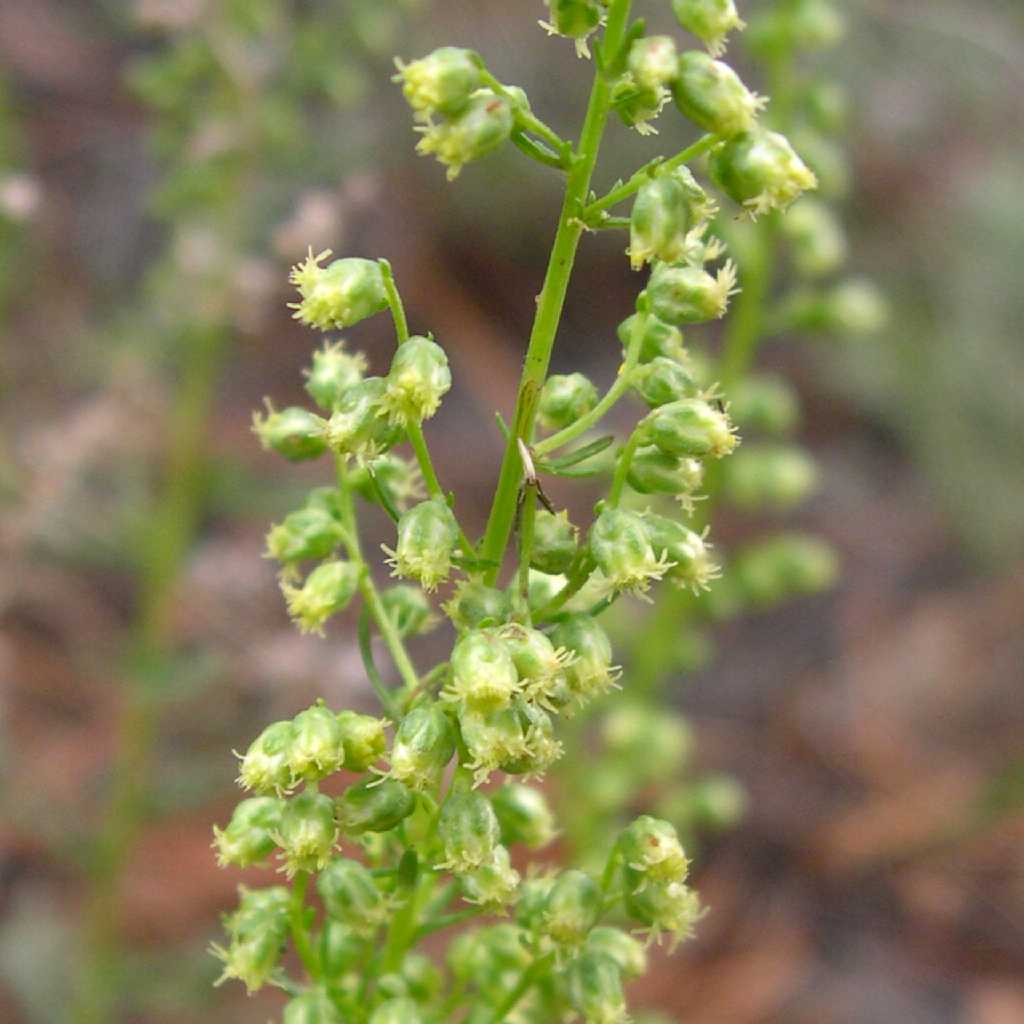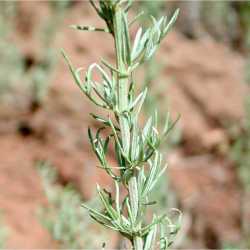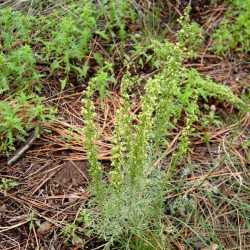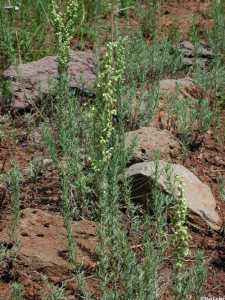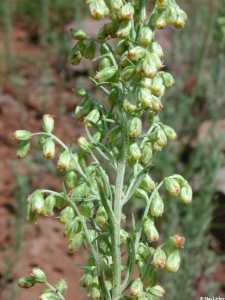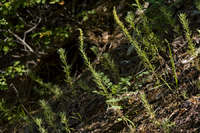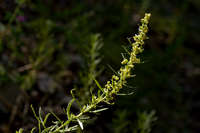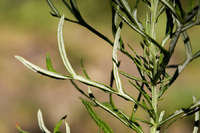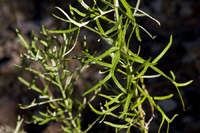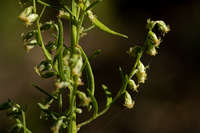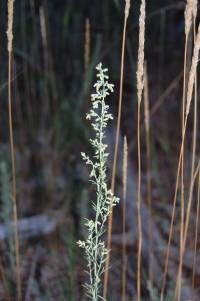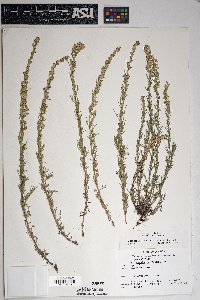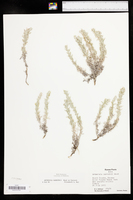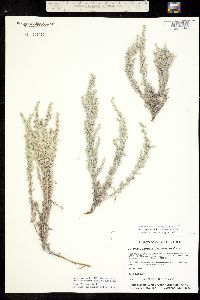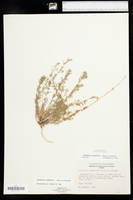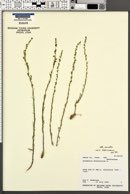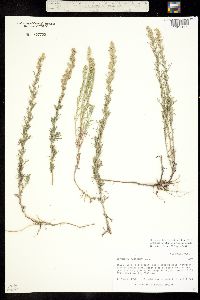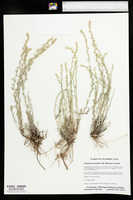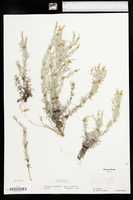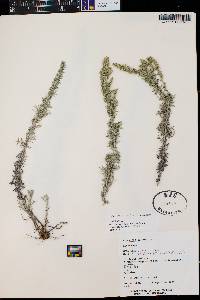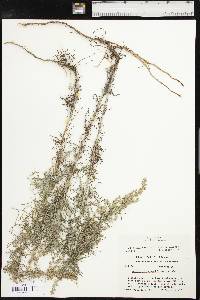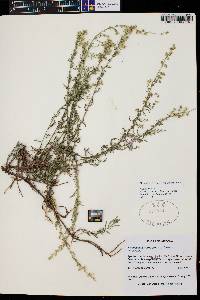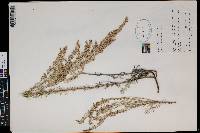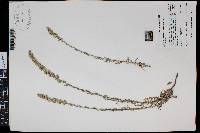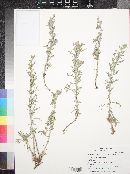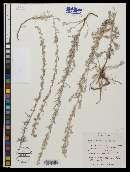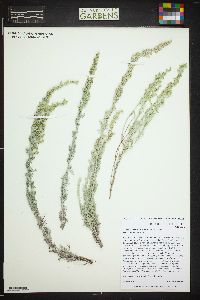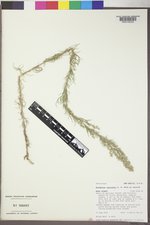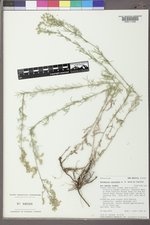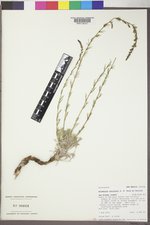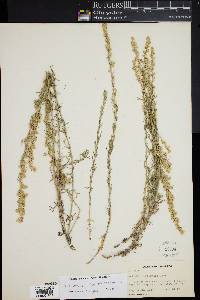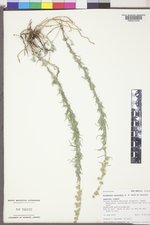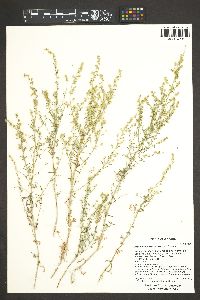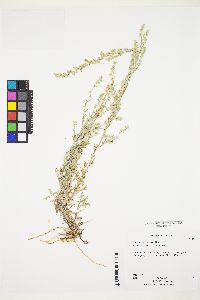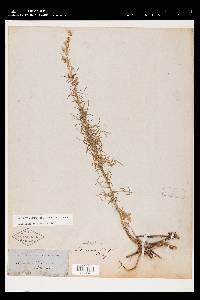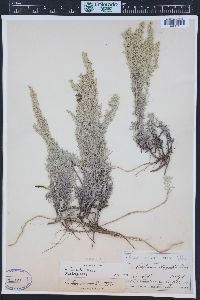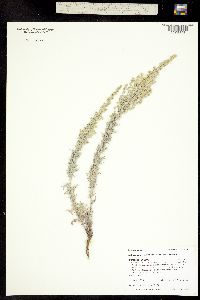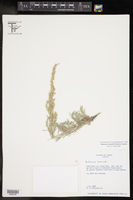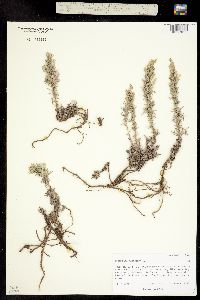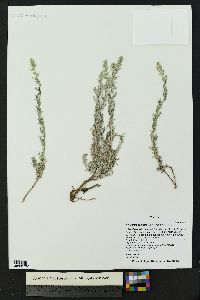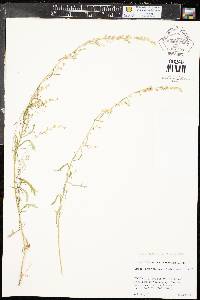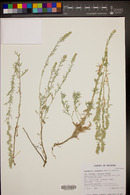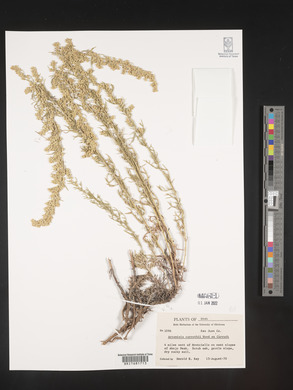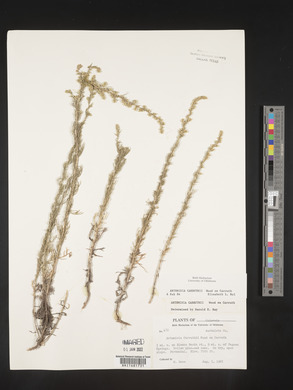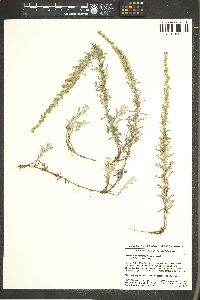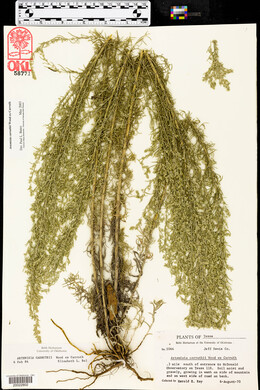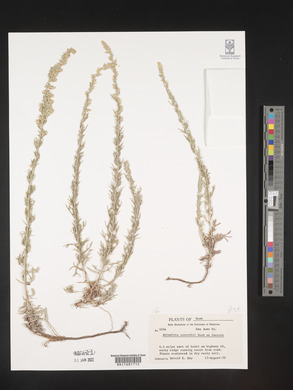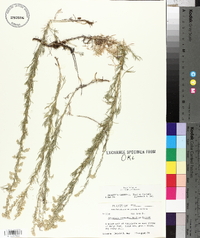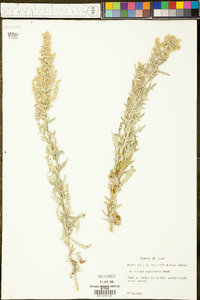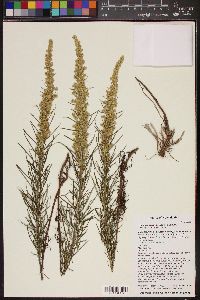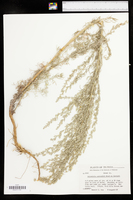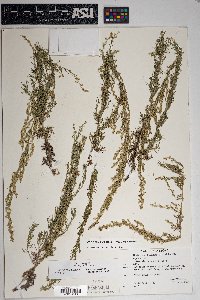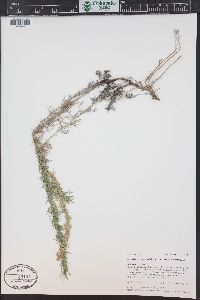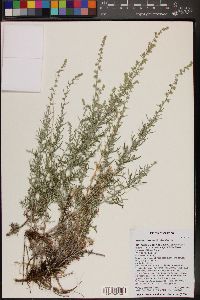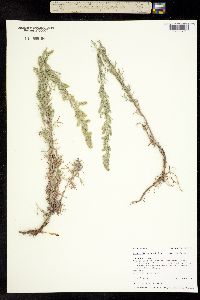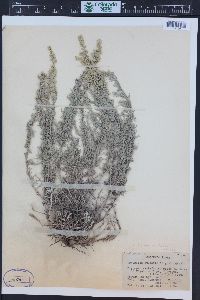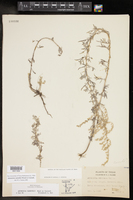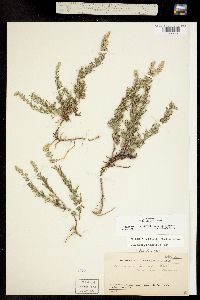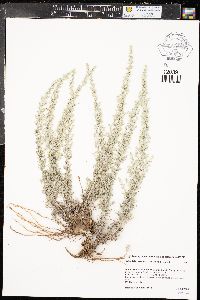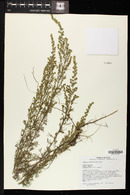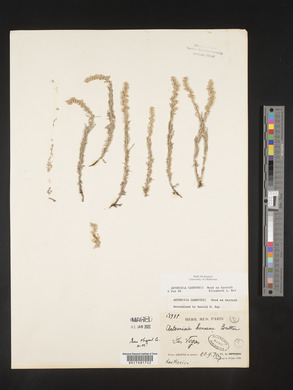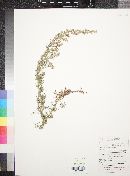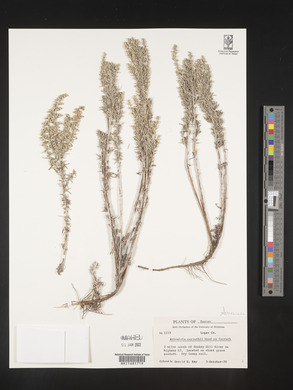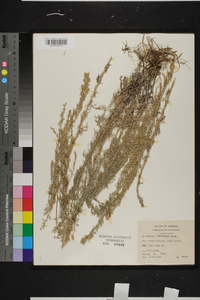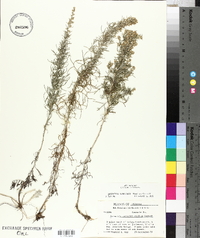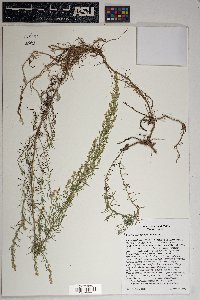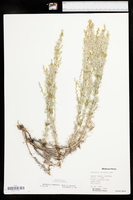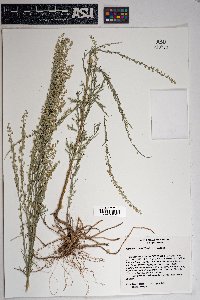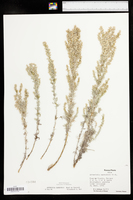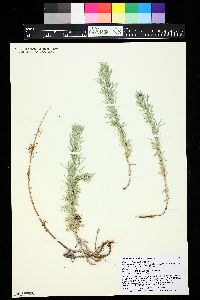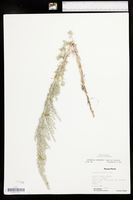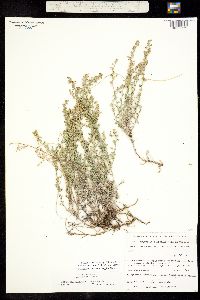
|
|
|
|
Family: Asteraceae
Carruth's Sagebrush
[Artemisia bakeri, moreArtemisia carruthii var. wrightii (A. Gray) Blake, Artemisia kansana Britt.] |
Perennials, 15-40(-70) cm, faintly aromatic (rhizomatous). Stems mostly 3-8, ascending, brown to gray-green, simple (bases curved, somewhat woody), sparsely to densely tomentose. Leaves cauline, bicolor (± gray-green); blades narrowly elliptic, 0.1-2.5(-3) × 0.5-1 cm (gradually smaller distally), relatively deeply pinnatifid (lobes 3-5), faces densely tomentose (abaxial) to sparsely hairy (adaxial). Heads (usually nodding) in (leafy) paniculiform arrays 10-30 × 3-9 cm (branches erect). Involucres campanulate, 2-2.5(-3) × 1.5-3 mm. Phyllaries lanceolate, gray-tomentose. Florets: pistillate 1-5; bisexual 7-25; corollas pale yellow, 1-2 mm, glandular-pubescent. Cypselae (light brown) cylindro-elliptic, ca. 0.5 mm, (curved at summits, scarcely nerved), glabrous (shining). 2n = 18. Flowering mid summer-early fall. Open sites, usually sandy soils, wooded areas, grasslands, railroads; 600-2900 m; Ariz., Colo., Kans., Mich., Mo., N.Mex., Okla., Tex., Utah; Mexico (Chihuahua, Sonora). Artemisia carruthii is closely related to members of the A. ludoviciana complex, with which it may intergrade.
FNA 2006, Kearney and Peebles 1969, McDougall 1973, Heil et al 2013 Duration: Perennial Nativity: Native Lifeform: Forb/Herb General: Faintly aromatic perennial herbs, 15-40 cm tall, rhizomatous, sometimes with a woody base; stems mostly 3-8, erect, unbranched, brown to gray-green. Leaves: Alternate and sessile; blades deeply pinnatifid into linear-filliform lobes, those 1 mm wide or less, densely tomentose on lower surface, sparsely hairy on upper surface. Flowers: Flowering heads small, discoid, nodding, arranged in narrow, leafy panicles; involucre (the ring of bracts surrounding the flower head) campanulate, to 3 mm high, the bracts (phyllaries) dry, membranous, overlapping, gray, tomentose; florets all discs, including 7-25 bisexual florets, surrounded by 1-5 pistillate florets, all 1-2 m high, with yellow corollas. Fruits: Achenes ellipsoid, glabrous, light brown, to 0.5 mm. Ecology: Found in open sandy soils in sagebrush, aspen forests, and spruce-fir forests, from 6,000-9,000 ft (1829-2743 m); flowers August-November. Distribution: MO to TX, west to UT and AZ. Notes: Distinguished by being an aromatic perennial herb with bluish-gray-green leaves deeply divided into narrow lobes 1 mm or less wide (thicker in ludoviciana), the faces with long, interwoven hairs (tomentose), the stems very leafy and topped by a leafy inflorescence (A. campestris has less hairy leaves, less leafy stems, and a nearly leafless inflorescence) of many small flower heads which dangle. A. carruthii var. wrightii is distinguished by the upper surfaces of the leaves being glabrate and green; both the typical form and var. wrightii are present in the region. FNA notes that Artemisia carruthii is closely related to A. ludoviciana and the two species may occasionally hybridize. Ethnobotany: Plant was eaten; used ceremonially; and used medicinally for cough, fever, cold, flu, sores, and sheep's sore backs. Etymology: Artemisia is named for Artemis, the Greek goddess of the hunt and namesake of Artemisia, queen of Anatolia; while carruthii is named for James H. Carruth, who collected extensively in the plains in the 19th century. Synonyms: Artemisia carruthii var. wrightii, Artemisia kansana Editor: LCrumbacher 2011, AHazelton 2015 A southwestern sp. with the lvs divided nearly or quite to the midrib into elongate slender lobes seldom over 1(-2) mm wide, is occasionally intr. in our range. Gleason, Henry A. & Cronquist, Arthur J. 1991. Manual of vascular plants of northeastern United States and adjacent Canada. lxxv + 910 pp. ©The New York Botanical Garden. All rights reserved. Used by permission. From Flora of Indiana (1940) by Charles C. Deam Indiana Coefficient of Conservatism: C = null, non-native Wetland Indicator Status: n/a |
|
|
|
This project was made possible in part by the Institute of Museum and Library Services [MG-70-19-0057-19].
Powered by Symbiota

